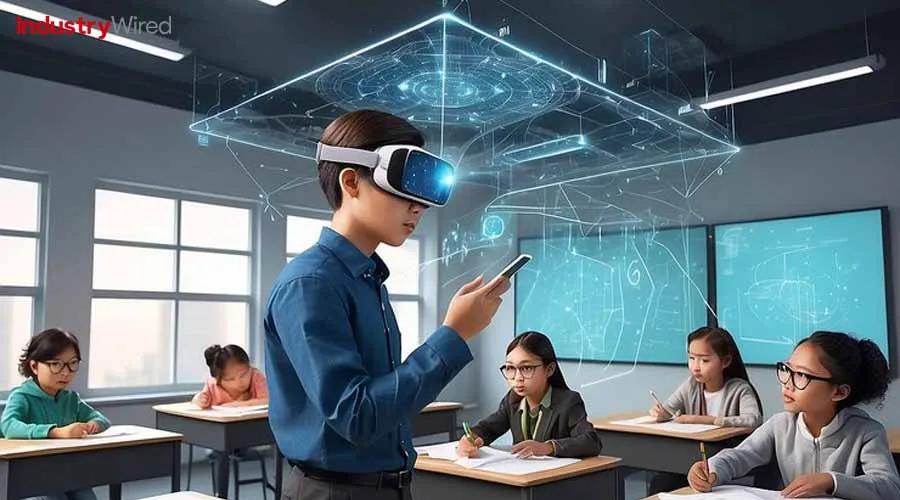Unlocking the Future: Essential Strategies for Training Teachers to Use VR/AR Tools Effectively
Introduction
As education embraces digital change, technologies like Virtual Reality (VR) and Augmented Reality (AR) are reshaping the classroom experience. While these immersive tools promise enhanced learning and engagement, the key to unlocking their full potential lies in training educators to use VR/AR effectively. From designing lesson plans to navigating technical challenges, well-prepared teachers can harness these technologies to create interactive and inclusive learning environments. In this article, we delve into essential strategies for training teachers to use VR and AR tools, offering practical insights, proven benefits, and tips for triumphant implementation.
Why VR and AR Matter in Modern Education
VR and AR technologies are revolutionizing education,offering students opportunities to explore complex concepts through immersive simulations. Whether it’s a virtual field trip to historical landmarks or augmented biology lessons with 3D models, these tools improve engagement, retention, and spatial understanding. However, the effectiveness of VR/AR hinges on teachers’ comfort and competency in using them. Thus, robust teacher training for VR/AR is critical in the digital classroom revolution.
Key Benefits of VR/AR in the Classroom
- Enhanced Engagement: Students experience hands-on learning through interactive 3D content.
- Deeper Understanding: Complex concepts become easier to grasp thanks to immersive simulations.
- Differentiated Instruction: VR/AR tools cater to diverse learning styles and student needs.
- Safe Experimentation: Virtual labs and simulations allow learning from mistakes without real-world risks.
- Global access: Virtual environments enable exploration beyond classroom walls, facilitating international collaboration.
Essential strategies for Training Teachers to Use VR/AR Tools
Successful integration of VR and AR depends on more than just access to technology; it requires structured teacher training programs that build confidence and instructional expertise. Below, we outline essential strategies for equipping educators to use immersive technologies effectively.
1. Hands-on Professional Progress Workshops
- Interactive Sessions: Organize live workshops where teachers experience VR/AR technology firsthand.Allowing educators to explore content as both learners and instructors promotes familiarity and reduces apprehension.
- Scenario-Based Training: Simulate real classroom scenarios to help teachers understand how to integrate VR/AR into their specific subject areas.
2. Peer-to-Peer Learning and Mentoring
- Establish AR/VR Champions: Identify early adopters or tech-savvy teachers to serve as mentors and resources for their colleagues.
- Peer Observation: encourage teachers to observe peers who have successfully implemented VR/AR lessons and share best practices.
3.Create Clear, Step-by-Step guides and Resources
- user Manuals: Develop concise instructional guides tailored to different VR/AR platforms and applications.
- Video Tutorials: offer bite-sized video walkthroughs highlighting both technical setup and pedagogical tips.
4. Emphasize Pedagogical Integration over Technology
- Align with Curriculum: Focus training on how VR/AR applications enhance curriculum objectives,not just the novelty of the technology.
- Assessment Strategies: Teach educators how to assess student learning outcomes from VR/AR experiences.
5. Foster Supportive Learning Communities
- Online Forums and Groups: Encourage participation in digital communities where teachers exchange ideas, troubleshoot issues, and showcase successful lessons.
- Continuous Feedback: Implement a feedback loop so teachers can share their experiences and refine their approach.
6. Encourage Experimentation and Reflection
- Safe Spaces for Exploration: Promote risk-taking by normalizing trial-and-error and reflective practice in training sessions.
- Documentation: Urge teachers to document and reflect on their VR/AR lessons to track progress and share insights.
Best Practices and Practical Tips for Successful VR/AR Teacher Training
- Start Small: Introduce one VR/AR tool or lesson at a time to avoid overwhelm.
- Leverage Free Resources: Use open-source VR/AR content and platforms to experiment without hefty investments.
- Ensure Accessibility: Address diverse student needs by incorporating accessibility features and alternative activities.
- Schedule Regular Check-Ins: Maintain ongoing support for teachers as they transition from training to classroom implementation.
- Incorporate Feedback: Gather input from both teachers and students to continuously improve VR/AR-based lessons.
- Plan for Technical Issues: Prepare back-up activities and train teachers to troubleshoot common problems.
Case Studies: Real-World Success Stories
Case study 1: Immersive History Lessons in the UK
A secondary school in London implemented VR tours of ancient Rome, allowing students to walk through virtual ruins. Teachers received hands-on workshops over two months, enabling them to confidently guide students through the experience and develop assessments tied to historical learning outcomes. Student engagement increased by 35%, and teachers reported higher satisfaction due to effective training and support.
Case Study 2: AR Science Labs in the US
In Minnesota, a STEM-focused high school introduced AR simulations for biology and chemistry. Teachers were part of an ongoing mentoring program, receiving on-demand support and video tutorials. within a semester, teachers successfully blended AR labs with conventional instruction, leading to improved comprehension and collaboration among students with varying learning abilities.
First-Hand Experience: Teacher Perspectives
“Initially, I was nervous about using VR in my science classes. The training sessions helped demystify the technology and showed me how it enhances lessons rather than replacing traditional methods. Now, my students look forward to every VR lab, and their curiosity has skyrocketed!”
– Sarah L., Middle school Science Teacher
“With AR history simulations, my students finally understood the scale of ancient cities. The step-by-step guides from our training program made the transition smooth, and having mentors to lean on was invaluable.”
– Michael B., High School History Teacher
Conclusion: Empower Teachers, Empower Students
The future of education lies in immersive and interactive learning. By investing in comprehensive VR/AR teacher training,schools prepare educators to overcome initial hurdles and foster unforgettable learning experiences. Focused professional development, peer support, practical resources, and reflection create a foundation for confident VR/AR integration, unlocking new dimensions of student engagement and achievement. As these technologies continue to evolve, well-trained teachers will be the driving force shaping tomorrow’s digital classrooms—empowering students to learn, create, and explore beyond the imaginable.

